Georgia Coast Atlas:
A Portal to Hidden Stories
Emory scholars invite the world to travel through time and unique environments, via a public digital resource
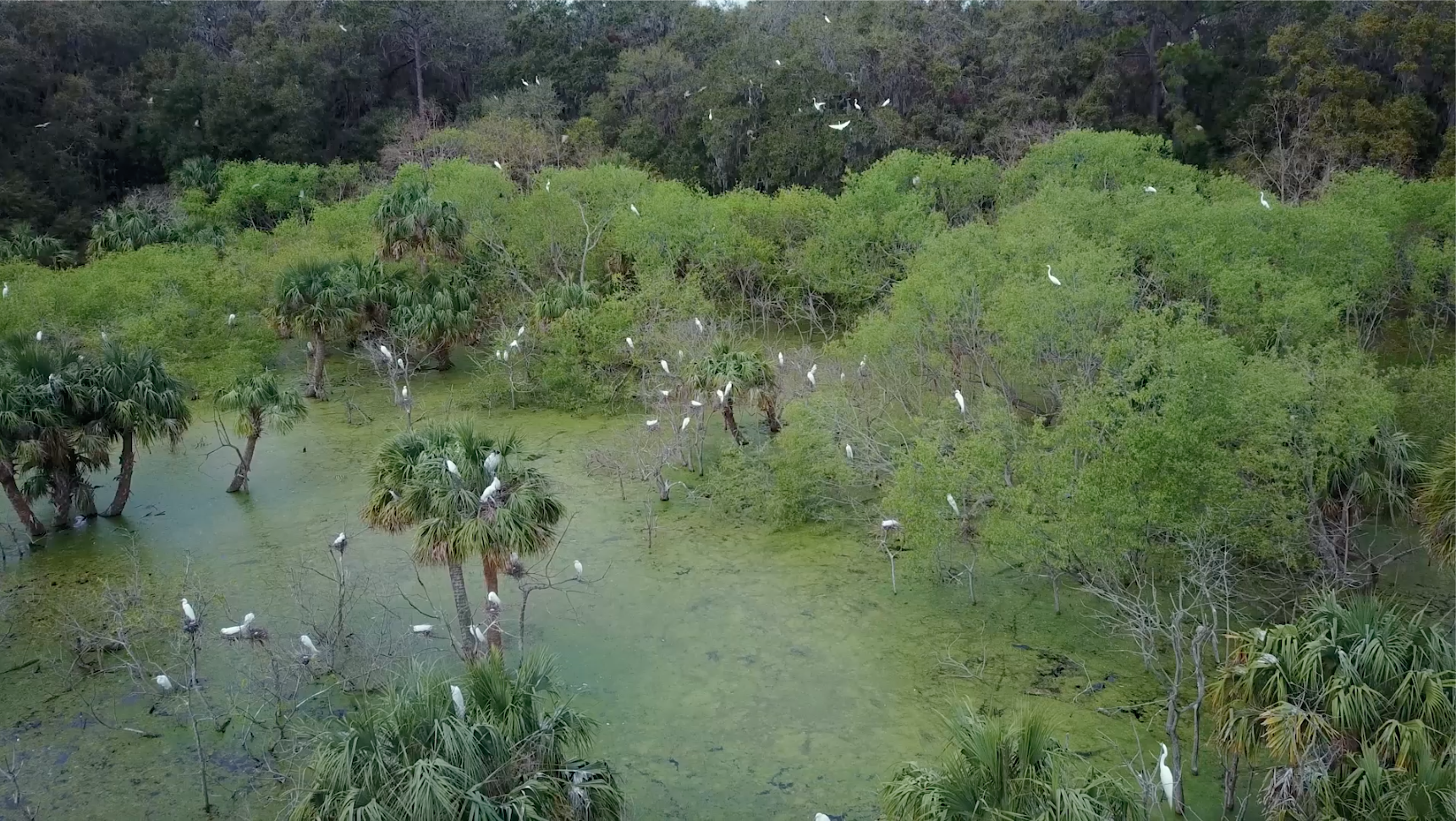
The Georgia Coast Atlas is a public, online gateway to the dynamic ecosystems and intriguing history of the state’s 100-mile-long coast and barrier islands. Emory University’s Department of Environmental Sciences and the Emory Center for Digital Scholarship launched the ambitious project. It showcases scholarship in science and the humanities, weaving together research, fieldwork and technology to create an unprecedented resource for educators, conservationists, students and the general public.
The interactive trove — made up of stunning flyover video, oral and written stories and annotated maps — keeps expanding through the efforts of Emory students and faculty.
“The main aim of the Atlas is to show how special the Georgia coast is as a place,” says Anthony Martin, a professor of practice in Environmental Sciences. “Secondly, it documents how the region is rapidly changing.”
Jessie Moore Torres contributed research as an Emory undergraduate, majoring in environmental sciences. She focused on three little-known islands at the mouth of the Altamaha River — Wolf, Egg and Little Egg — providing a detailed picture of their role in the coastal ecosystems. She also conducted an in-depth spatial analysis, combining historical aerial photos she uncovered in archives and modern satellite data, to show how the shorelines of Wolf and Egg eroded in recent decades.
“Few people know about these islands, because they are a U.S. National Wildlife Refuge and visitors aren’t allowed, but they’re an important nesting area for migratory birds and sea turtles,” says Torres, a native of Puerto Rico.
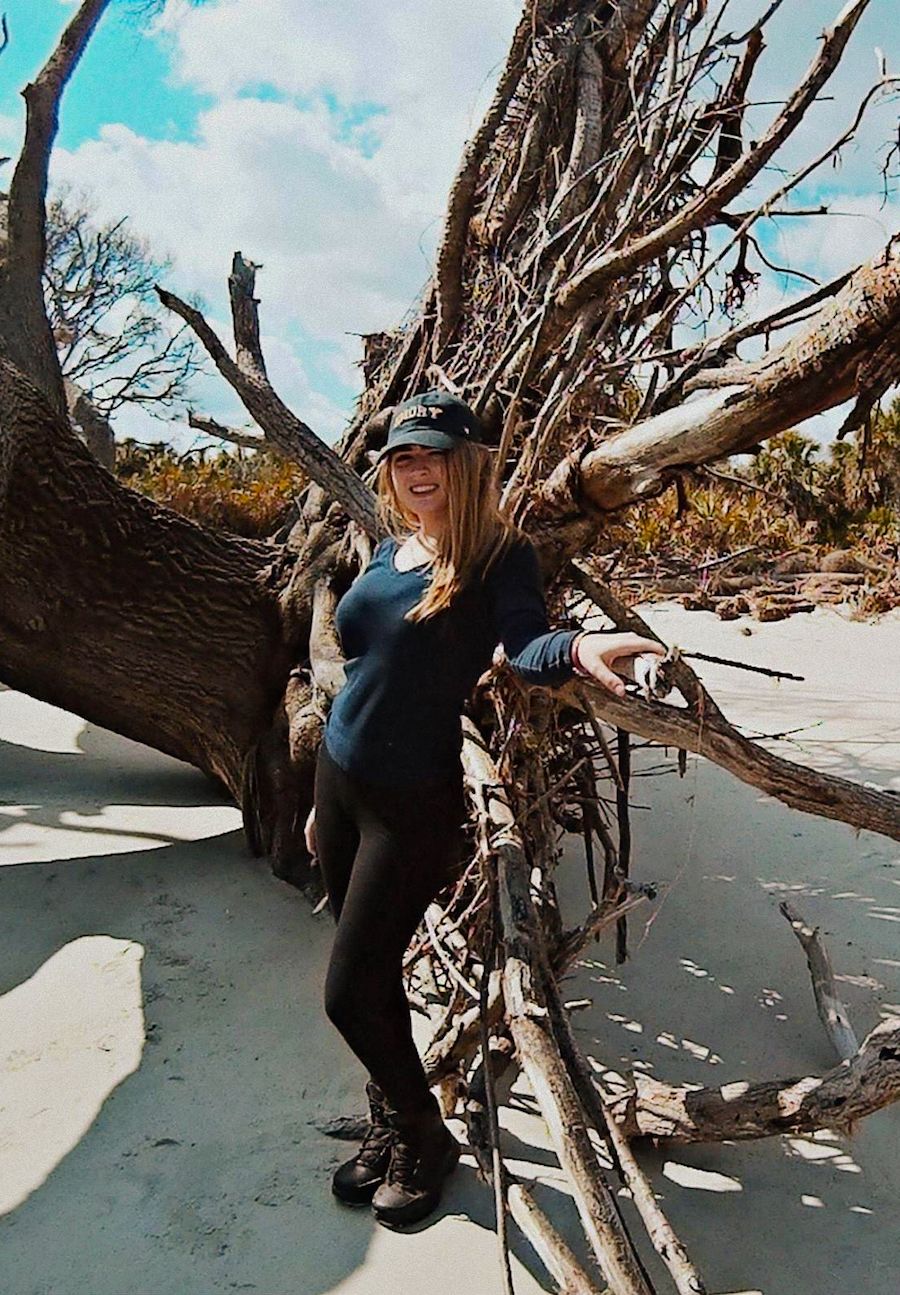
“The more people learn about the Georgia coast, the more likely they will want to take care of it," says Jessie Moore Torres, shown during a 2017 class field trip to Georgia's St. Catherines Island. She stands next to the roots of a massive toppled oak — one of many felled by the combined effects of sea-level rise, storms and a shifting shoreline.
“The more people learn about the Georgia coast, the more likely they will want to take care of it," says Jessie Moore Torres, shown during a 2017 class field trip to Georgia's St. Catherines Island. She stands next to the roots of a massive toppled oak — one of many felled by the combined effects of sea-level rise, storms and a shifting shoreline.
Torres was deep into the final throes of her Atlas project during her junior year, in the fall of 2017, when Hurricane Irma spun through the Caribbean. Although the Category 5 storm only grazed Puerto Rico, it cut power to more than 1 million residents of the island, before lashing Georgia, causing coastal flooding and storm surges. Irma, however, was just the warm-up act. Hurricane Maria arrived two weeks later, hitting Puerto Rico as a Category 4 storm and causing catastrophic damage. Waist-deep floods covered much of Torres’ hometown, the capital of San Juan, although she was relieved to learn that the apartment building where her mother lived was spared.
“It was a very intense semester, I can tell you that,” Torres says, describing the stress of following hurricane news while in Atlanta. “My mother kept telling me not to worry, to focus on my studies, but obviously I was worried watching images of massive clouds about to hit San Juan. It shocked me. But it also inspired me to do the best job I could with my research.”
The barrier islands of Georgia, she explains, like the mangroves and coral reefs of Puerto Rico, are critical to buffer the impact of storms. “We need to protect coastal habitats — for the benefit of wildlife and of people,” Torres says.
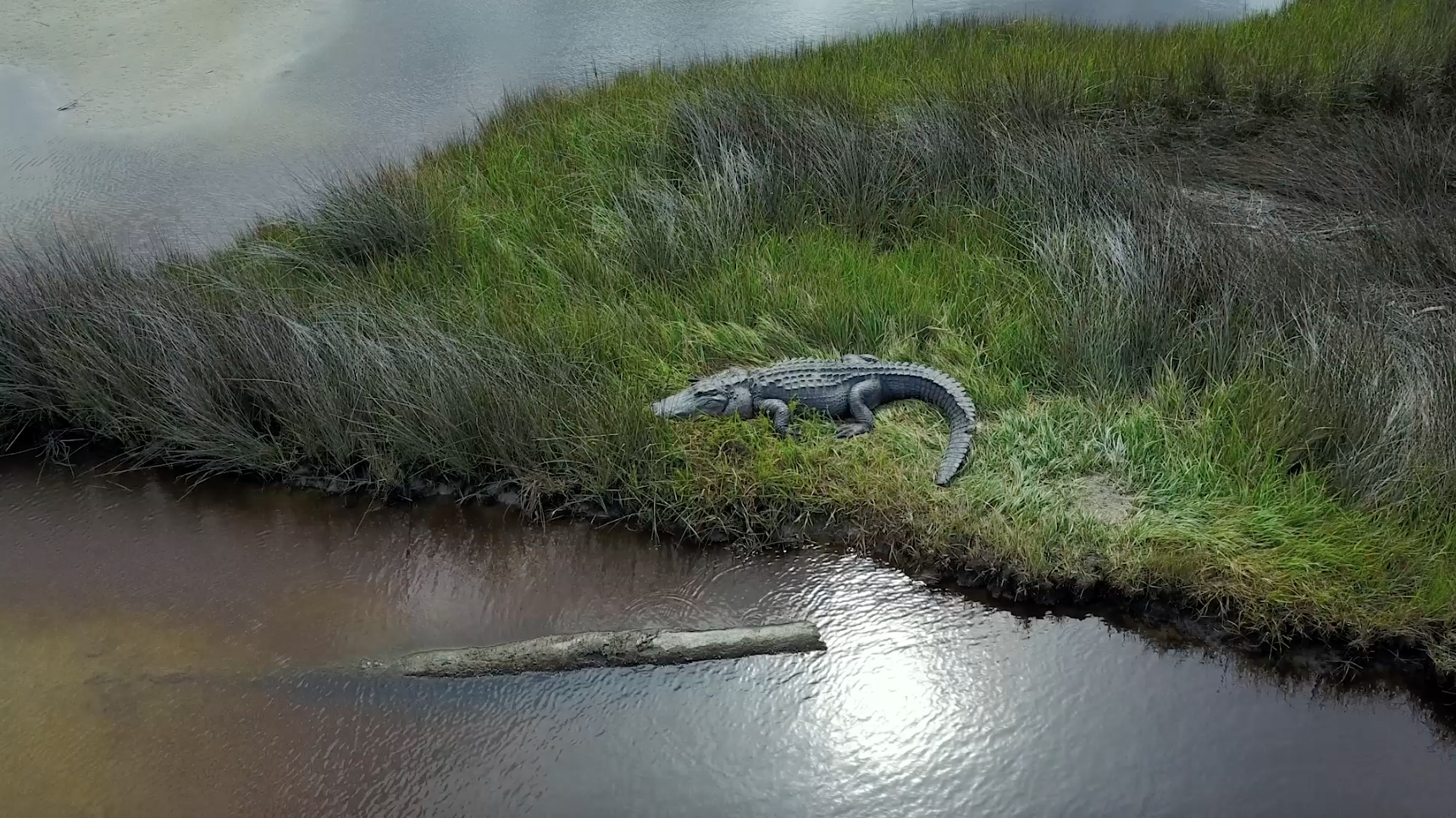
Alligators helped hatch the idea for the Georgia Coast Atlas.
Martin had embarked on a project to measure and map alligator dens on Saint Catherines Island, a privately-owned enclave open only to researchers and their students. Martin specializes in ichnology — studying traces of life such as tracks, nests and burrows. He wanted to learn more about how alligators cope with environmental stressors, like drought.
“I’m interested in questions like, ‘How did alligators survive the Cretaceous Period when dinosaurs didn’t?’” he says. “One likely part of the answer is that alligators burrow.”
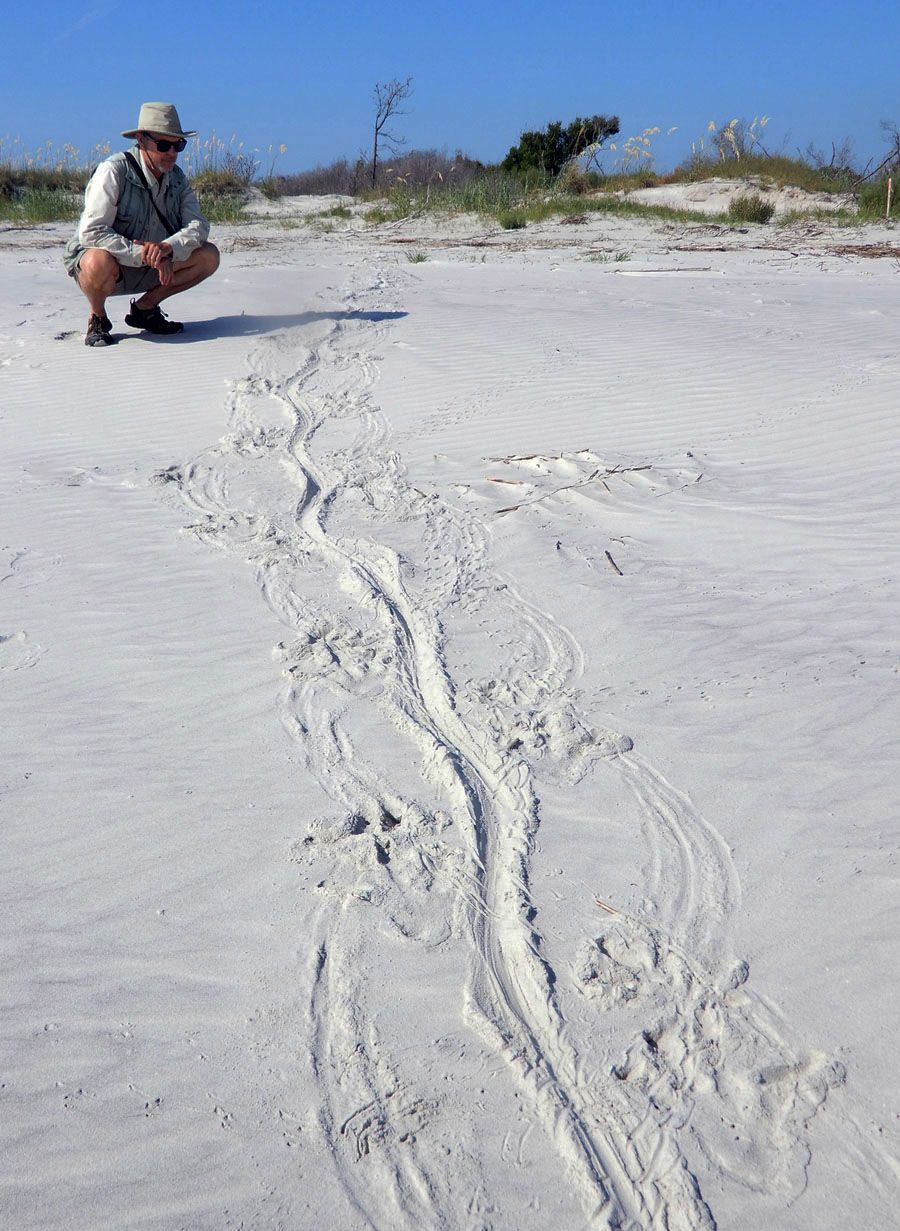
Martin inspects an alligator's footprints and tail drag on a beach of Sapelo Island, Georgia. "Alligators like seafood, too," he says. (Photo by Ruth Schowalter)
Martin inspects an alligator's footprints and tail drag on a beach of Sapelo Island, Georgia. "Alligators like seafood, too," he says. (Photo by Ruth Schowalter)
Martin teamed up with Michael Page, an expert in cartography and geospatial technology and a lecturer in Environmental Sciences and the Emory Center for Digital Scholarship. The idea of translating alligator data into maps was irresistible to Page. He was willing to stick his neck out to get every detail right.
“I leaned down into the entrance of one large den to measure it and we heard a loud growl,” Page recalls.
“I think we can mark this den as active,” Martin told him, making a note.
“I enjoy the thrills,” Page says now, “as long as I stay alive.”
He drew the line, however, at wading waist deep into salt marshes to locate alligator dens. So, he brought a drone into the field. “It’s like having super vision,” Page says. “You’re extending your eyes out far across the salt marsh and getting to see all these amazing landscapes and wildlife.”
When Steve Bransford caught wind of the alligator den project he was intrigued. As senior video producer of the Emory Center for Digital Scholarship, or ECDS, Bransford works with faculty and students to develop interactive digital resources for scholars and the public. The center’s projects include “Voyages: The Trans-Atlantic Slave Trade Database,” documenting the forced migration of 12.5 million Africans aboard slave vessels, and “Atlanta Explorer,” an interactive virtual time machine of the city between the years 1928 to 1940.
“The Georgia coast is a national treasure,” Bransford says. “It’s ideal for digital scholarship.”
Watch an Atlas interview, below, with Edda L. Fields-Black, an historian at Carnegie Mellon University specialized in enslaved laborers in the South Carolina and Georgia Lowcountry during the antebellum period.
Georgia’s coastal region contains one third of the remaining salt marshes of the U.S. Atlantic seaboard and the largest tracts of intact maritime forests in the nation. Its 12 major barrier islands range from well-populated tourist haunts like Tybee, Jekyll and St. Simons to the national seashore of Cumberland Island, and the privately-owned preserve of St. Catherines and the state-owned Ossabaw Island. The waters off the Georgia coast are a calving site for endangered right whales. The rich biodiversity of the region includes spectacular flocks of roseate spoonbills, white ibis and the threatened wood stork.
The human history of the Georgia coast is also rich and diverse. Creek and Oconee Native American tribes, Spanish, French and English settlers and enslaved Africans all left their marks on the area. Blackbeard Island, named after the legendary pirate, was once a disease quarantine station for ships. An 1898 hurricane destroyed the yellow fever hospital on Blackbeard. The African-rooted Gullah-Geechee community on nearby Sapelo repurposed lumber that washed up on shore from the hurricane to build the First African Baptist Church.
“I never get jaded by the Georgia coast. There is always a surprise,” Martin says. He’s introduced students to the area through field trips since 1997 and conducted research there for decades. He’s written two books on the region, including the most recent “Tracking the Golden Isles: The Natural and Human Histories of the Georgia Coast."
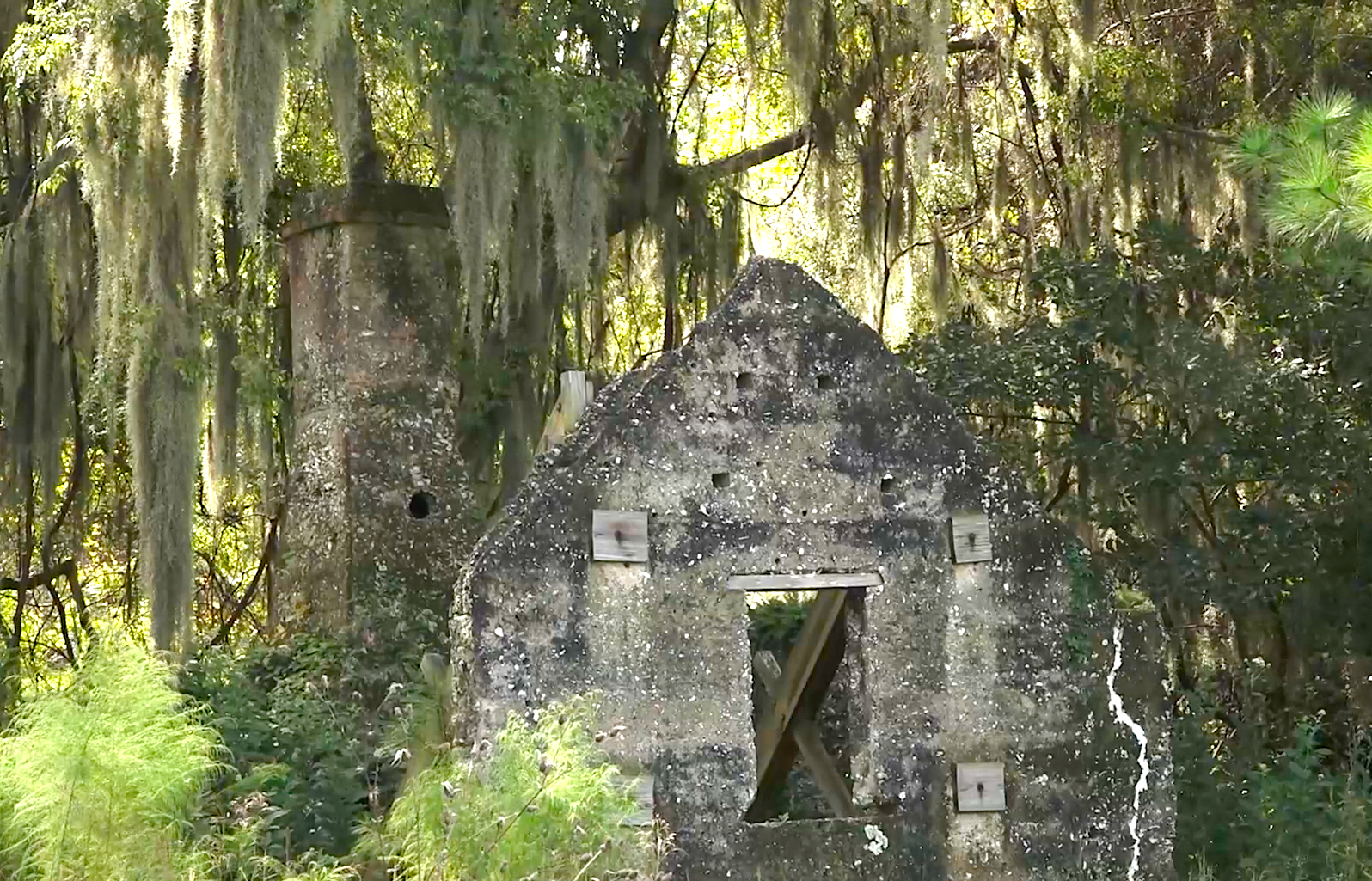
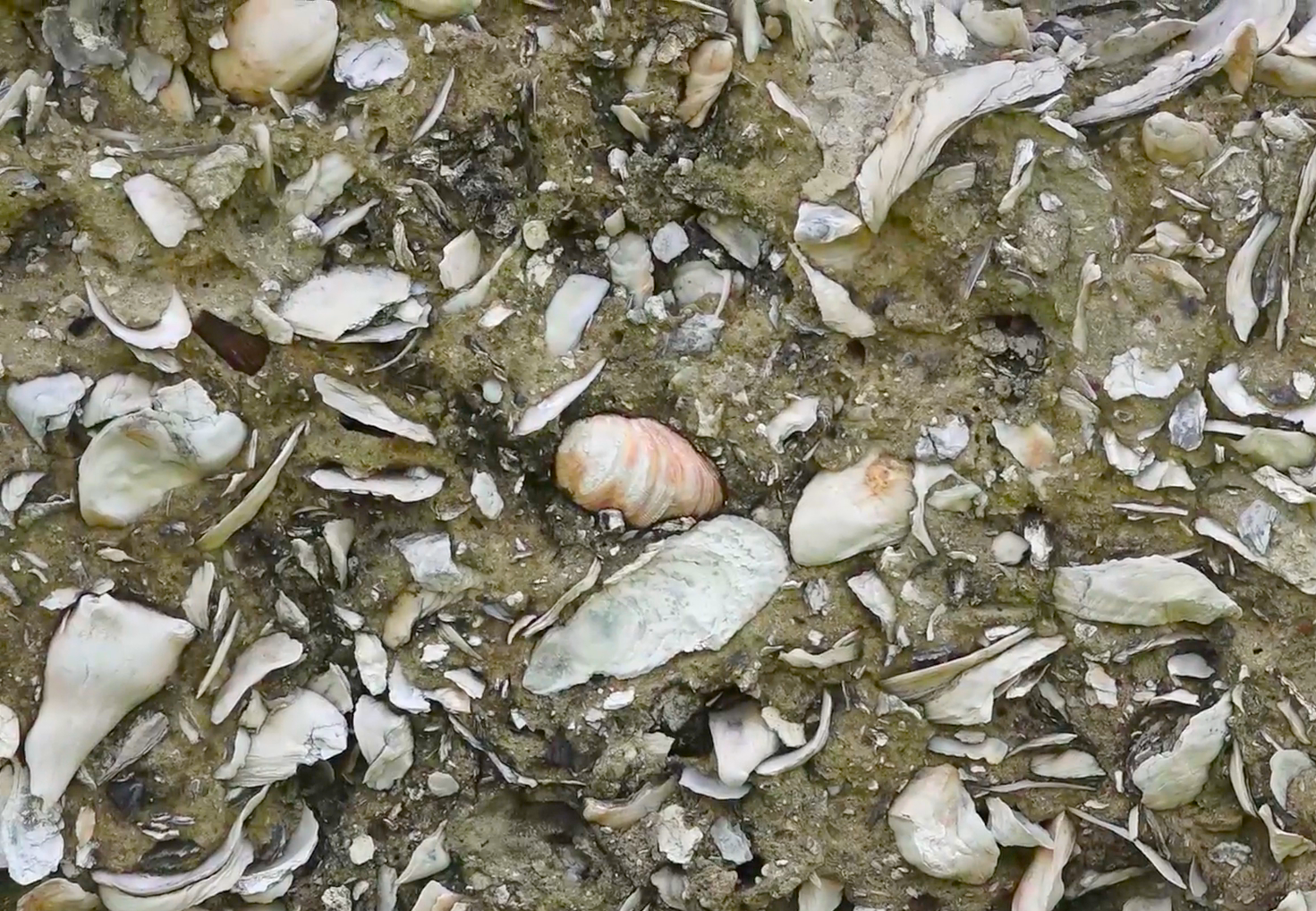
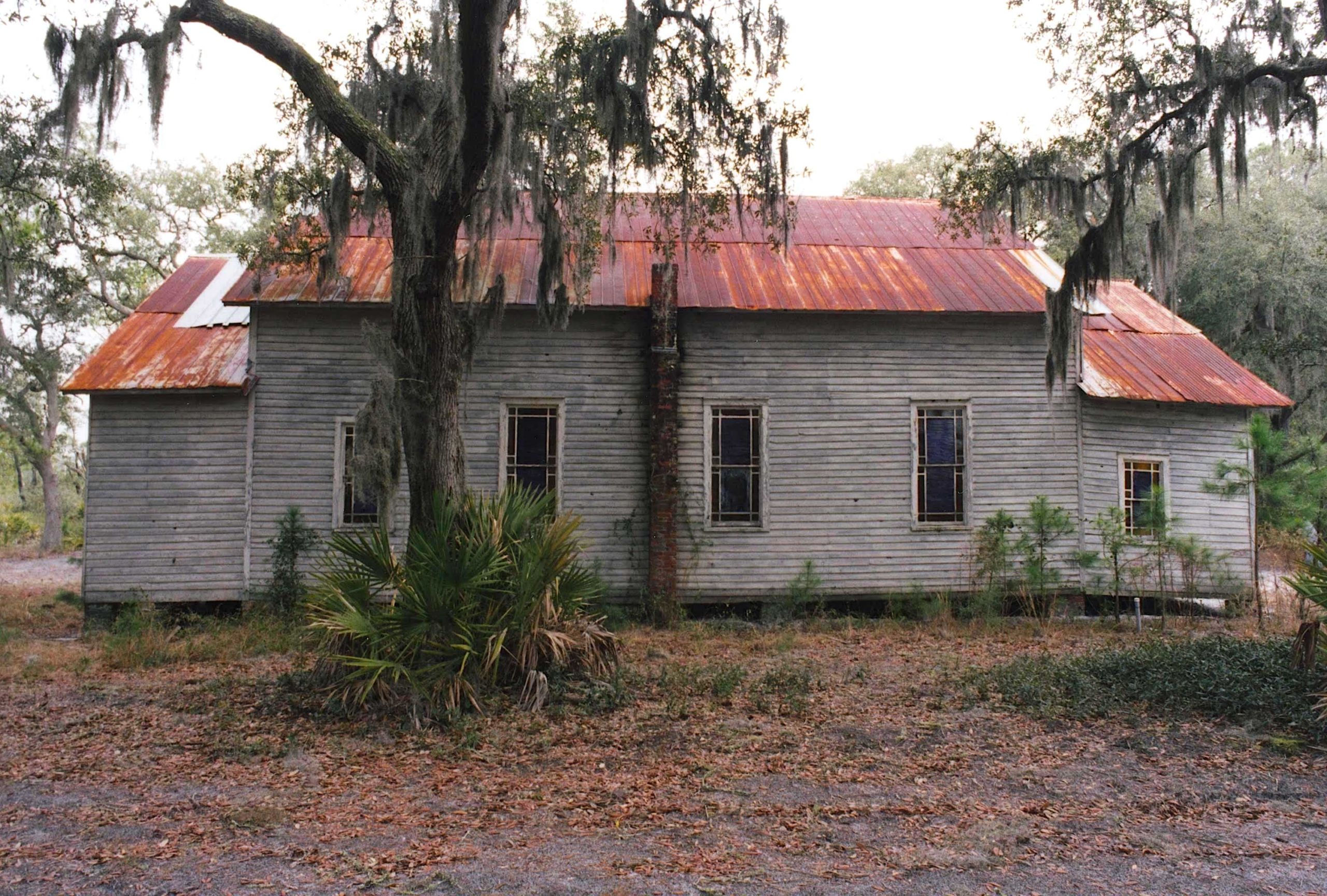

Ruins of a slave cabin built about 1819 on Sapelo Island for a cotton plantation. (Photo by Anthony Martin)
Ruins of a slave cabin built about 1819 on Sapelo Island for a cotton plantation. (Photo by Anthony Martin)

The cabin is made of shell stucco, known as tabby. The shells were harvested from an ancient shell ring that was built on Sapelo by Native American inhabitants for an unknown purpose.
The cabin is made of shell stucco, known as tabby. The shells were harvested from an ancient shell ring that was built on Sapelo by Native American inhabitants for an unknown purpose.

The First African Baptist Church on Sapelo, built circa 1900, is on the National Register of Historic Places. The photo shows the church before it was restored in 2000.
The First African Baptist Church on Sapelo, built circa 1900, is on the National Register of Historic Places. The photo shows the church before it was restored in 2000.
Bransford, Martin and Page joined forces to launch the Atlas. Martin and his students uncover ecological insights. Bransford, who is a documentary filmmaker, goes into the field to gather sound and video. He shoots brief on-the-ground videos of Martin and other researchers as they explain features of the landscape.
The Atlas is also collecting perspectives of researchers beyond Emory in a video gallery.
Page, meanwhile, moved up to shooting aerial images of the coast from a small plane, courtesy of SouthWings, a non-profit aviation company dedicated to conservation. Page rides behind the pilot in a vintage, two-seater military plane, a 1960s’ Cessna Bird Dog. He straps on a camera and hangs his head out the window to snap photos.
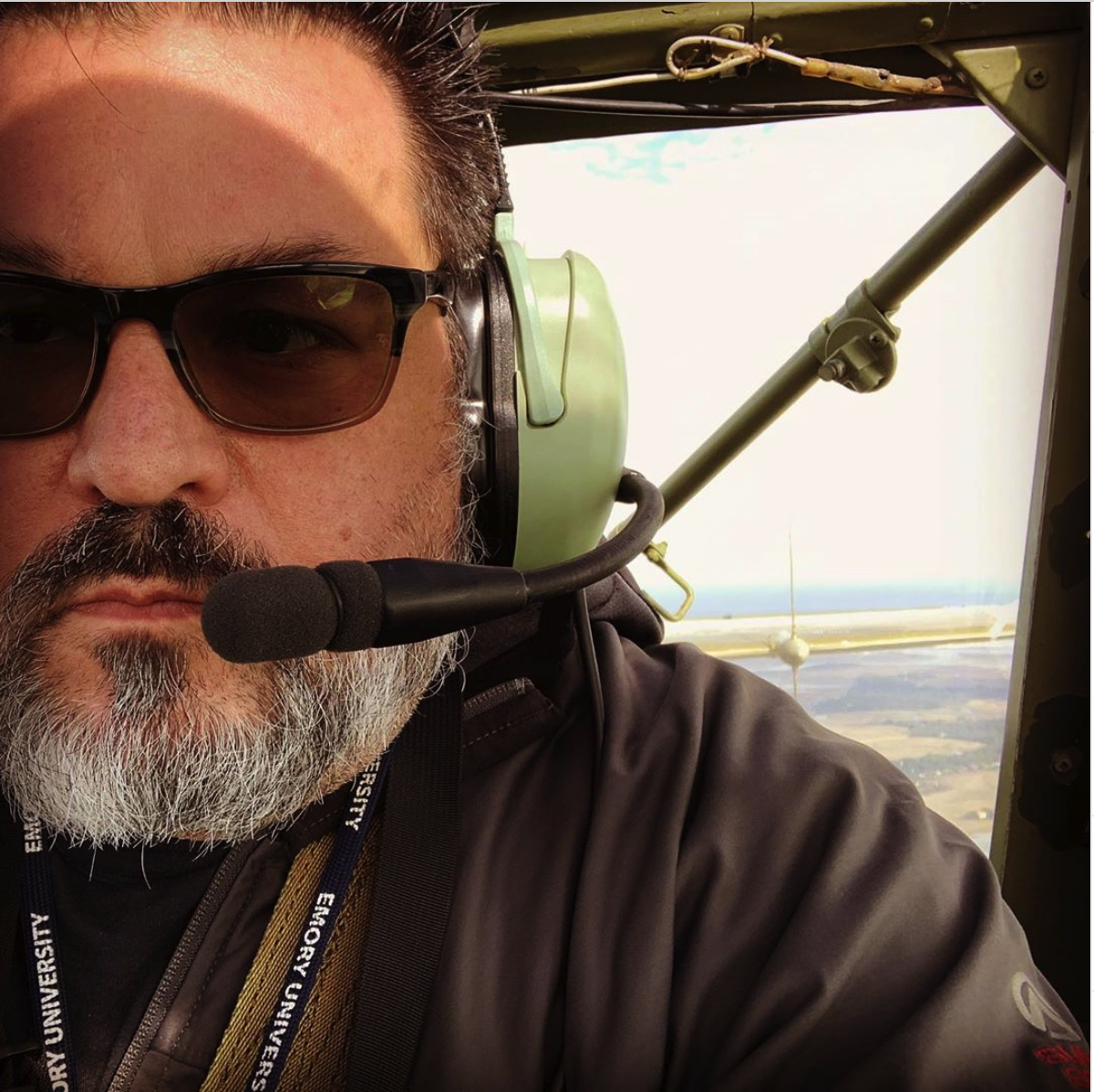
Page in the rear seat of the Cessna Bird Dog.
Page in the rear seat of the Cessna Bird Dog.
“It’s a great old prop plane, but a bit loud and windy,” says Page, who learned spatial technology while serving in the U.S. Navy. “I had my iPhone in my lap once when we hit an air pocket. The phone rose up to my eye level, then zipped out the window. It landed somewhere in the Altamaha Sound.”
The Atlas includes historical and modern-day aerial photos and satellite imagery from NASA, so users get a bird’s eye view of how the landscape changes over time. Images shot using LiDAR, or light detection and ranging technology, allow for fine-grain analyses of the terrain.
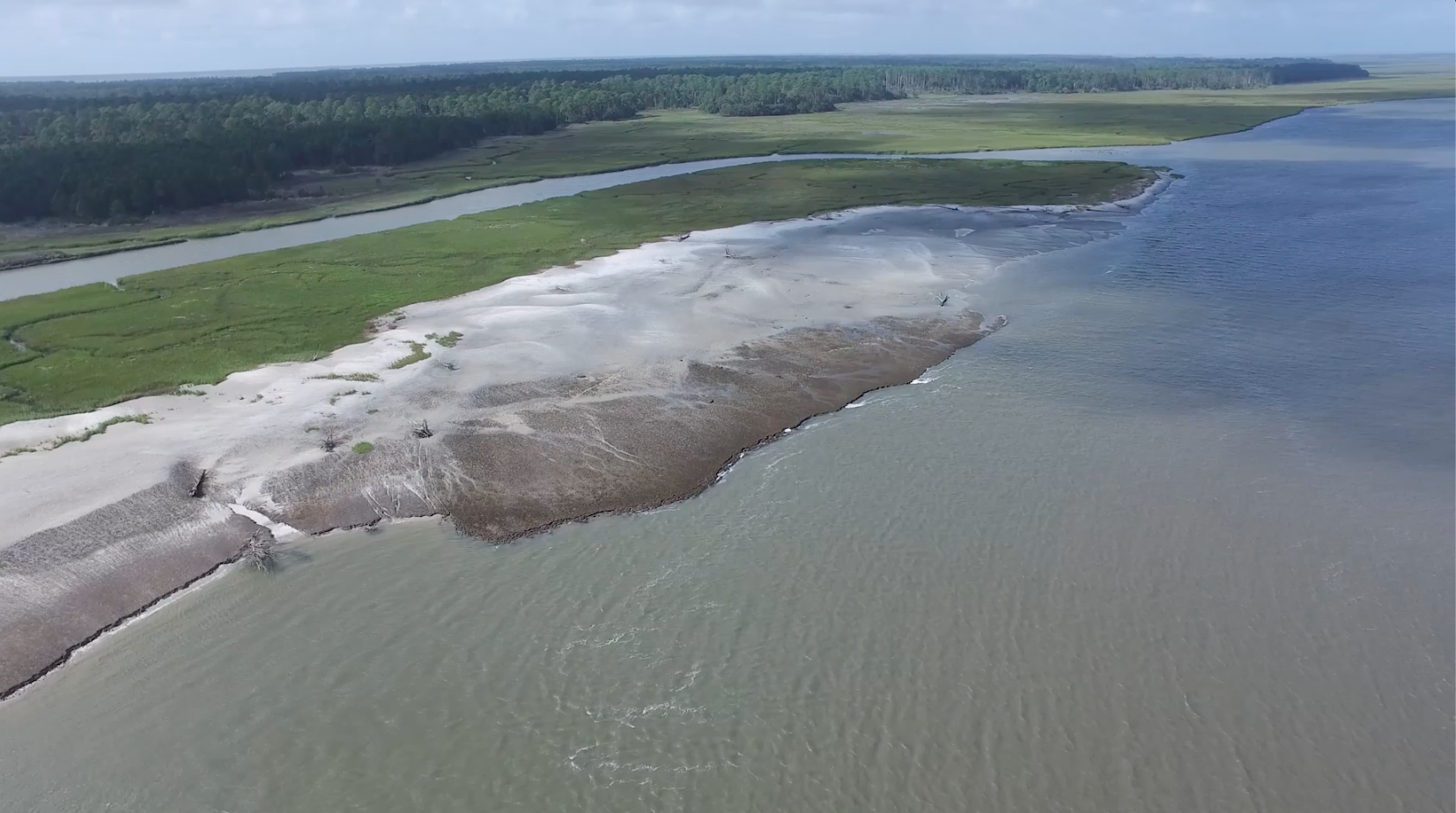
While the Atlas is an ongoing project, it now contains dozens of articles, annotated maps, videos, photo galleries and panoramas, and provides an overview of 12 barrier islands. “The Atlas is non-linear, so users can jump to wherever they want to go, or whatever aspect they are most interested in,” Bransford says.
The Georgia Coast Atlas is largely a labor of love, funded through the ECDS. The three Emory faculty remain the core drivers of the project, but their enthusiasm sweeps up staff members and students. The students gain hands-on experience — from field research to video production to computer coding — while contributing to a “living” Atlas that will serve the public and scholars long after they graduate.
“Students are the secret sauce of ECDS. They don’t just bring technical skills — they get the importance of the work,” says Bransford, who received a PhD in history from Emory’s Institute for the Liberal Arts in 2008.
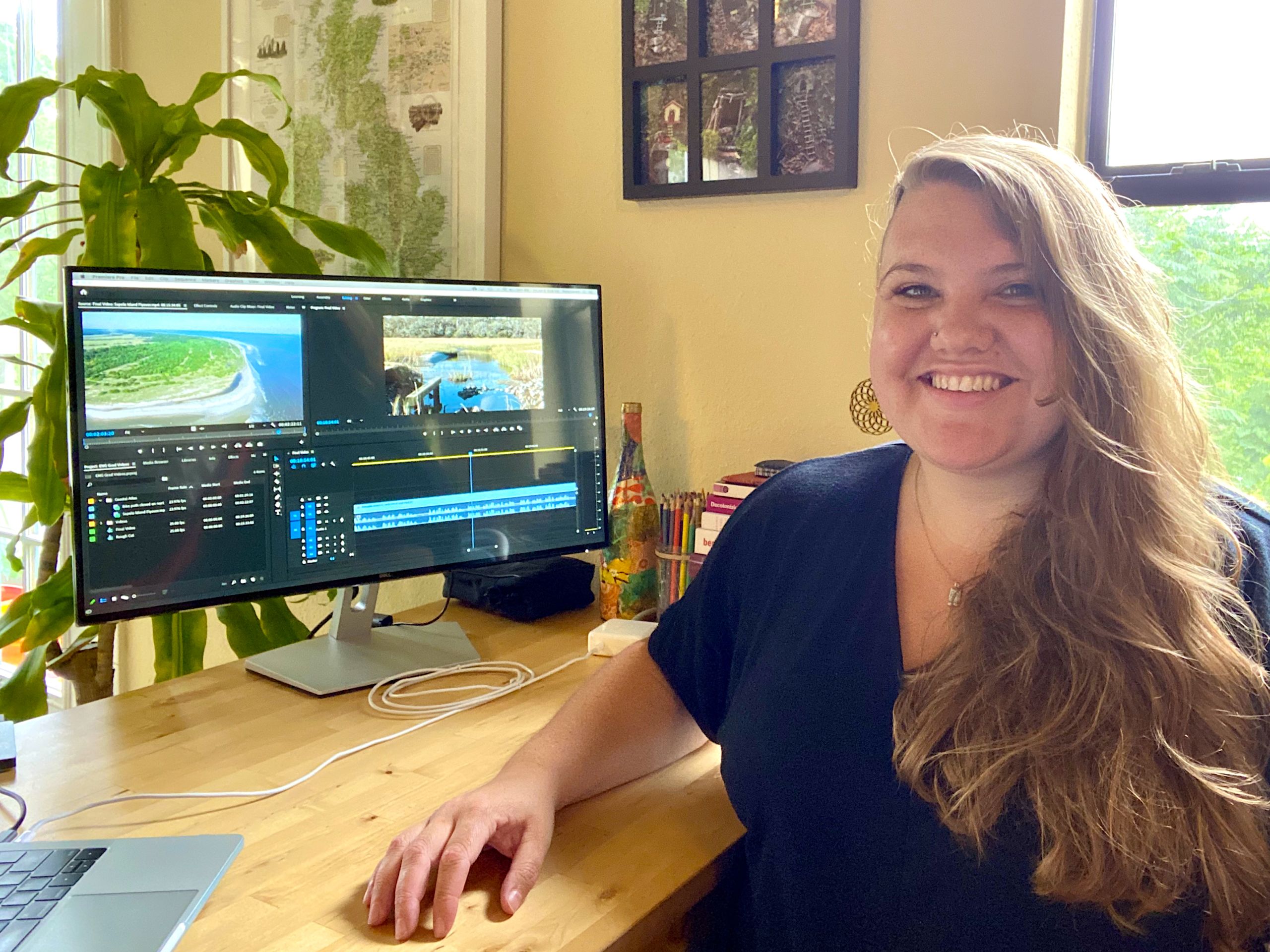
"I feel strongly that it's a university's job not just to teach students and do research, but to get knowledge out to the wider world," says graduate student Tesla Cariani, who is doing video editing for the Atlas.
"I feel strongly that it's a university's job not just to teach students and do research, but to get knowledge out to the wider world," says graduate student Tesla Cariani, who is doing video editing for the Atlas.
“It’s a joy to work on the Atlas,” says Tesla Cariani, a PhD candidate in English who is applying her skills in video editing to the project. Cariani, a Boston native who has documentary production experience, plans a career in public scholarship.
Cariani’s dissertation is on the links between violence against queer and trans people and their visibility. Working on the Georgia Coast Atlas offers a change of scene. “I’ve loved editing aerial video that takes you over sweeping vistas of beaches, marshes and forests,” she says. “It’s like a breath of fresh air when I’m not writing my dissertation.”
Footage from the aftermath of Hurricane Irma made an especially big impression on her. “I’ve learned how one storm event can quickly change a landscape,” she says.
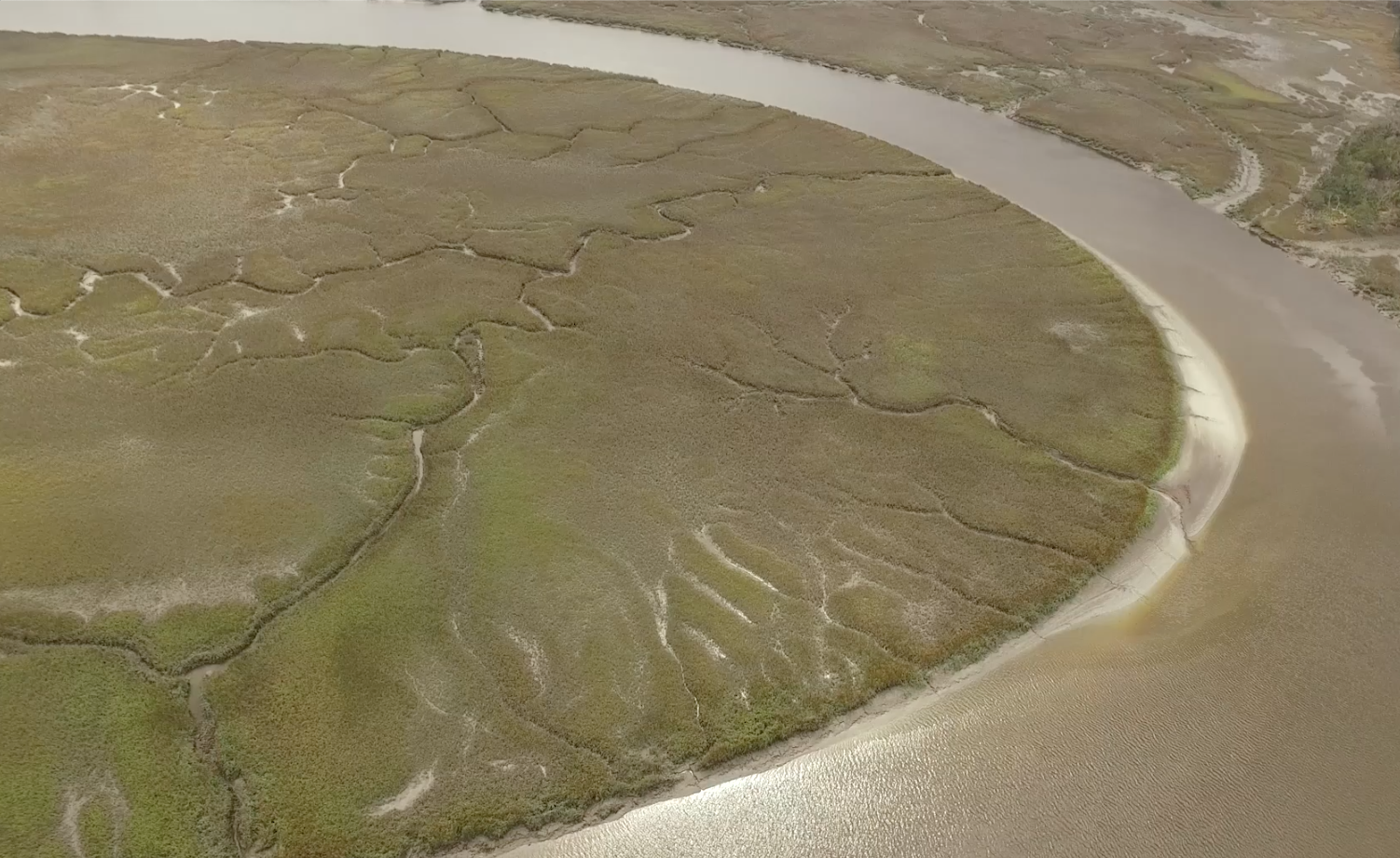
The Georgia coast changes people, too.
Jessie Moore Torres developed both a knack for technology and an appreciation for the ocean growing up in Puerto Rico. She thought she would become a software engineer when she enrolled at Emory in 2015. Then she took classes on the evolution of the Earth and barrier islands from Martin, and a course in spatial analysis from Page. Her interests began to merge and gel.
“I enjoy working with technology, but I realized that I didn’t just want to just be writing code all day,” Torres recalls. “I love learning about geology and our planet.”
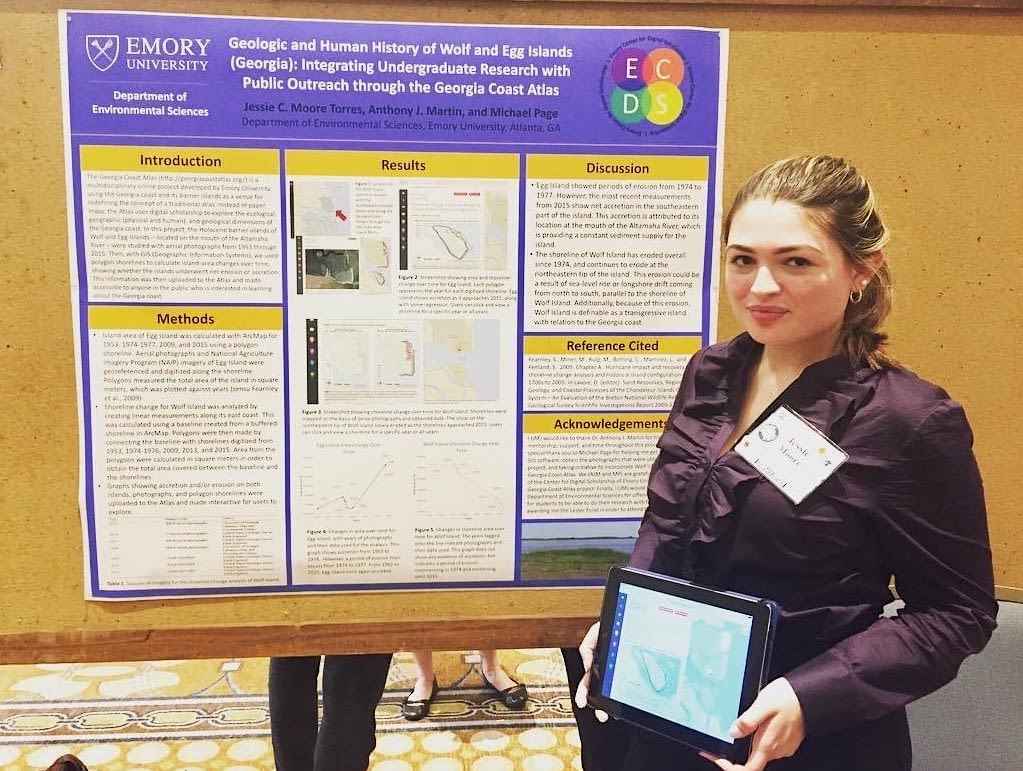
As an undergraduate, Jessie Moore Torres presented her research on Georgia barrier islands at two meetings of the Geological Society of America's Southeastern Section.
As an undergraduate, Jessie Moore Torres presented her research on Georgia barrier islands at two meetings of the Geological Society of America's Southeastern Section.
She interned with Page at ECDS, embedding her research on the barrier islands into the Georgia Coast Atlas. “I got to do science while communicating science to the public at the same time,” she says. “The more people learn about the Georgia coast, the more likely they will want to take care of it.”
Torres graduated from Emory in 2019 and is now finishing up a masters at the University of Miami in remote sensing technology and ocean sciences. She hopes to apply her knowledge in a career at a federal agency, like NOAA, to help mitigate the impacts of rising sea levels and major storms to coastal environments. “It’s like predicting the future based on past events,” she explains. “You use past satellite imagery to help inform environmental policy or plan evacuations for natural disasters.”
Cabretta Beach boneyard on Sapelo from ECDS on Vimeo.
Emory senior Katherine Walton, a computer science major, looks forward to working on the Georgia Coast Atlas through her job at ECDS. This fall, she will streamline the software of the Atlas, creating templates to simplify the process for uploading new content.
“Writing computer code is really satisfying to me,” she says. “Imagine setting up a chain reaction of dominoes. One thing kicks off another thing that kicks off the next thing. It’s like a conveyor belt that assembles something at the end.”
Walton also loves nature. She spent much of her childhood living in a remote Idaho wilderness where she was homeschooled. “I’m a data-driven person,” she says. “It’s not enough to say the environment is changing. Many people living away from a coast may not understand the effects of climate change like rising sea levels. They need to see it to believe it. The Georgia Coast Atlas gives you an eye into what’s going on. That’s awe-inspiring to me. It ties together my passion for computer science and the environment.”
Her work will help take the Georgia Coast Atlas to the next level.
“The Atlas is still in its infancy,” Bransford says, “but we have a great foundation for a comprehensive web portal for the Georgia coast. We plan to keep on building it out, and we hope to garner more contributions from scholars beyond Emory. We’re not setting a completion date, since the landscape is continuously changing.”
To learn more:
Georgia Coast Atlas, Emory Center for Digital Scholarship, Emory Department of Environmental Sciences
Media inquiries: Carol Clark, 404-727-0501, carol.clark@emory.edu

